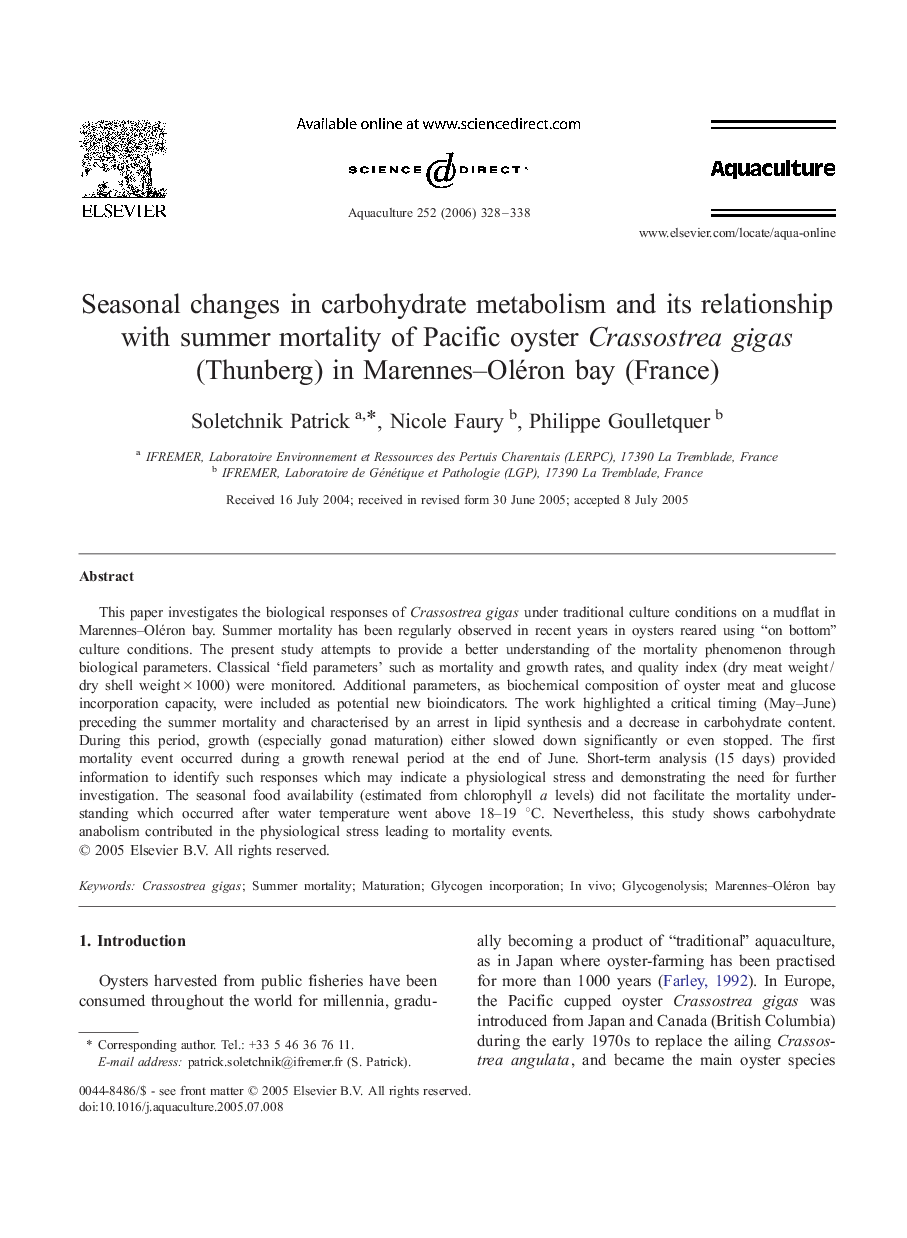| کد مقاله | کد نشریه | سال انتشار | مقاله انگلیسی | نسخه تمام متن |
|---|---|---|---|---|
| 2426164 | 1552989 | 2006 | 11 صفحه PDF | دانلود رایگان |

This paper investigates the biological responses of Crassostrea gigas under traditional culture conditions on a mudflat in Marennes–Oléron bay. Summer mortality has been regularly observed in recent years in oysters reared using “on bottom” culture conditions. The present study attempts to provide a better understanding of the mortality phenomenon through biological parameters. Classical ‘field parameters’ such as mortality and growth rates, and quality index (dry meat weight / dry shell weight × 1000) were monitored. Additional parameters, as biochemical composition of oyster meat and glucose incorporation capacity, were included as potential new bioindicators. The work highlighted a critical timing (May–June) preceding the summer mortality and characterised by an arrest in lipid synthesis and a decrease in carbohydrate content. During this period, growth (especially gonad maturation) either slowed down significantly or even stopped. The first mortality event occurred during a growth renewal period at the end of June. Short-term analysis (15 days) provided information to identify such responses which may indicate a physiological stress and demonstrating the need for further investigation. The seasonal food availability (estimated from chlorophyll a levels) did not facilitate the mortality understanding which occurred after water temperature went above 18–19 °C. Nevertheless, this study shows carbohydrate anabolism contributed in the physiological stress leading to mortality events.
Journal: Aquaculture - Volume 252, Issues 2–4, 10 March 2006, Pages 328–338